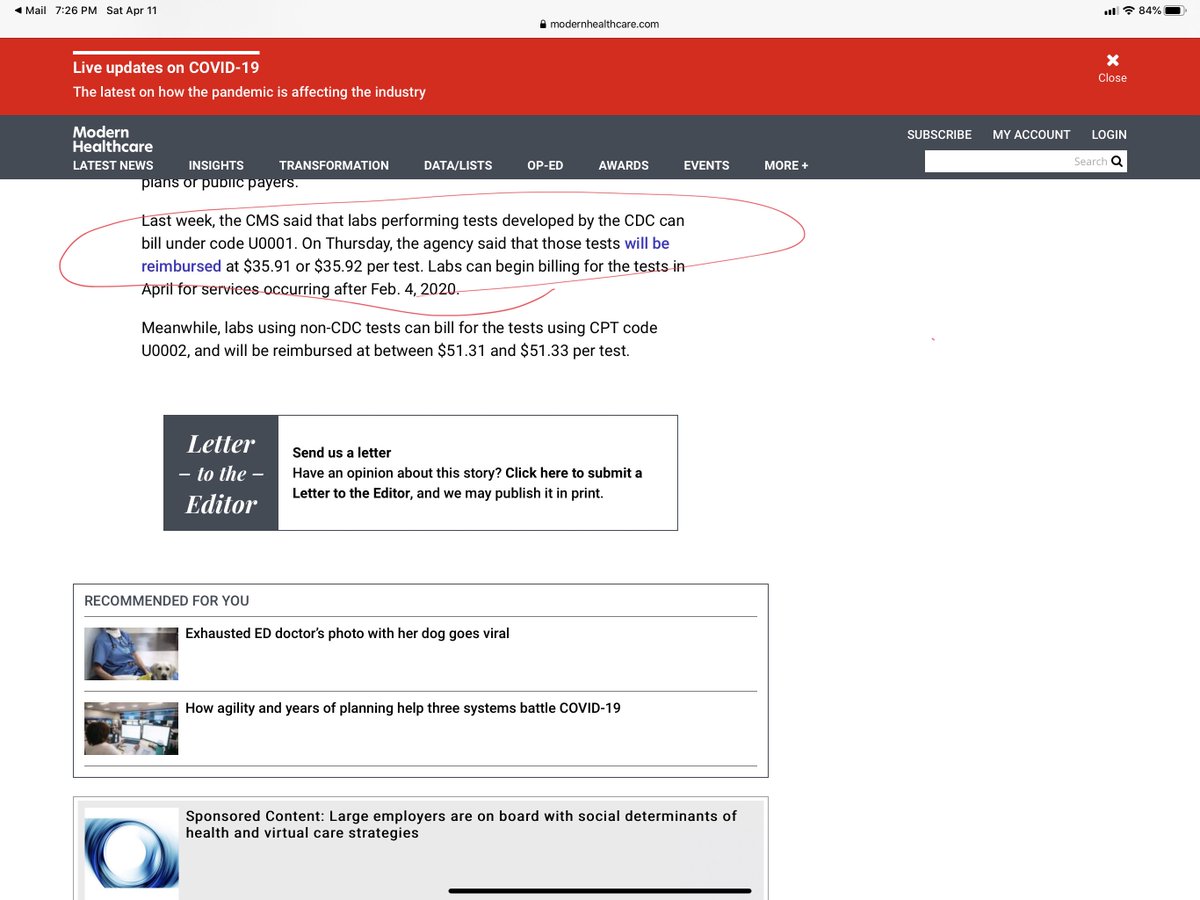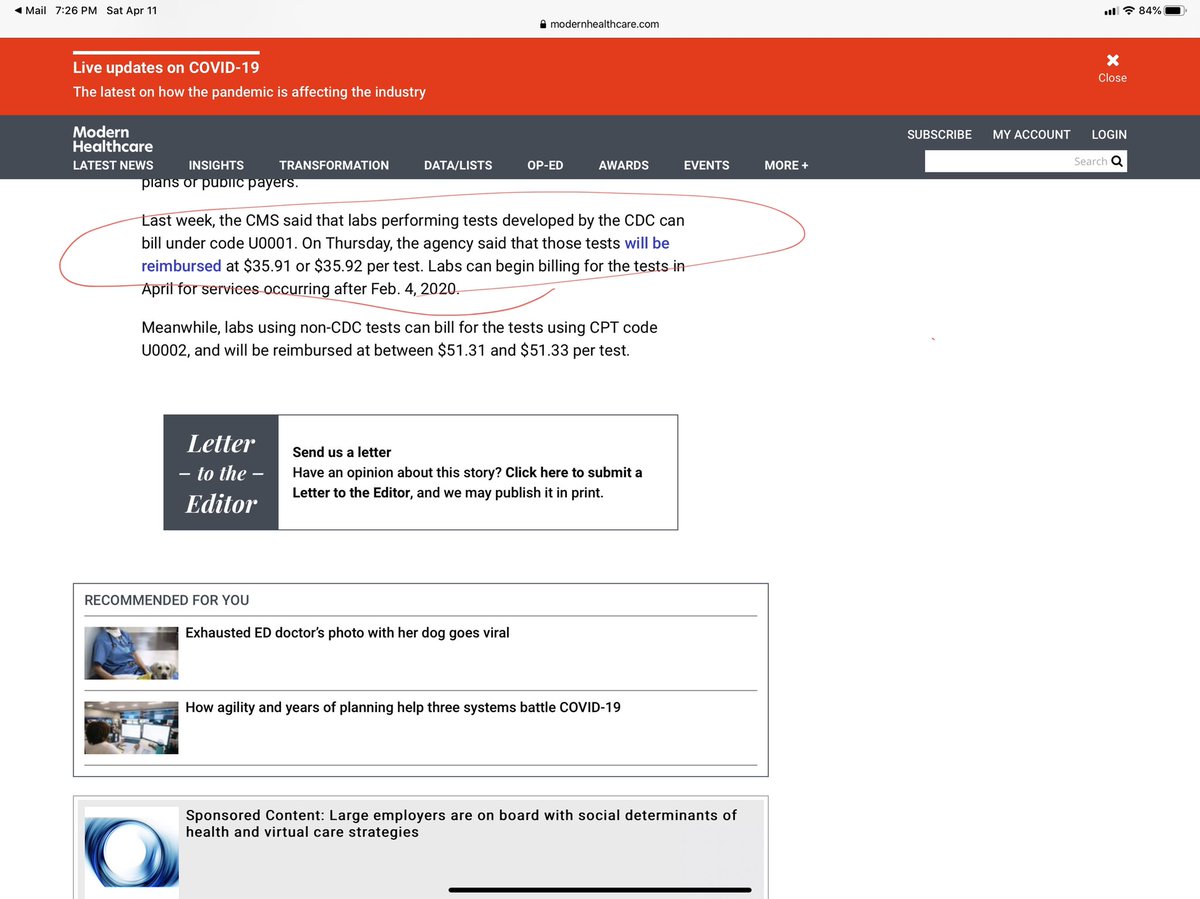@ScottGottliebMD @paulmromer @steventberry @erikbryn
The returns to testing are MASSIVE. @ATabarrok has written about this. This is @Austan_Goolsbee first rule of virus Econ. If we assume daily costs of shutdown are in $billions, we should be spending huge amounts (100s of billions) to speed reopening https://marginalrevolution.com/marginalrevolution/2020/03/a-solution-if-we-act.html">https://marginalrevolution.com/marginalr...
One constraint a la @paulmromer might be regulatory - e.g. FDA says you need to use swab x even though unapproved swab Y is nearly a perfect substitute https://twitter.com/paulmromer/status/1249115887413743616">https://twitter.com/paulmrome...
Another possibility per @steventberry is a sort of Leontief style rigidity whereby the x test is missing swabs, the y test is missing reagents etc https://twitter.com/steventberry/status/1249117348583407616">https://twitter.com/steventbe...
It could be literal funding - CMS pays surprisingly little for COVID testing given the seeming return per test
. @nature has an article that says unused capacity is an issue because a hospital electronic medical system cannot order a test easily from a new vendor. https://www.nature.com/articles/d41586-020-01068-3W">https://www.nature.com/articles/...
Is it conditionality of payment? EG would @SutterHealth do tests rapidly if we paid $200 per test and payment was conditional on 8 hour reporting or if we paid them $10,000 per test for 4 hour reporting?
Is it that we haven’t had long enough for new technologies to come online, like protein testing, where solution might be huge contracts to new vendors or X-prizes?
Is the answer all of the above? If so, likely answer is a shotgun approach.
. @ScottGottliebMD seems to say unused capacity https://twitter.com/scottgottliebmd/status/1248969808835641346">https://twitter.com/scottgott...
Likewise, payments that are too low (which is crazy, since willingness to pay is sky high) https://twitter.com/scottgottliebmd/status/1248970410785484801">https://twitter.com/scottgott...
Another aspect might be personnel to literally run the PCR process.

 Read on Twitter
Read on Twitter



